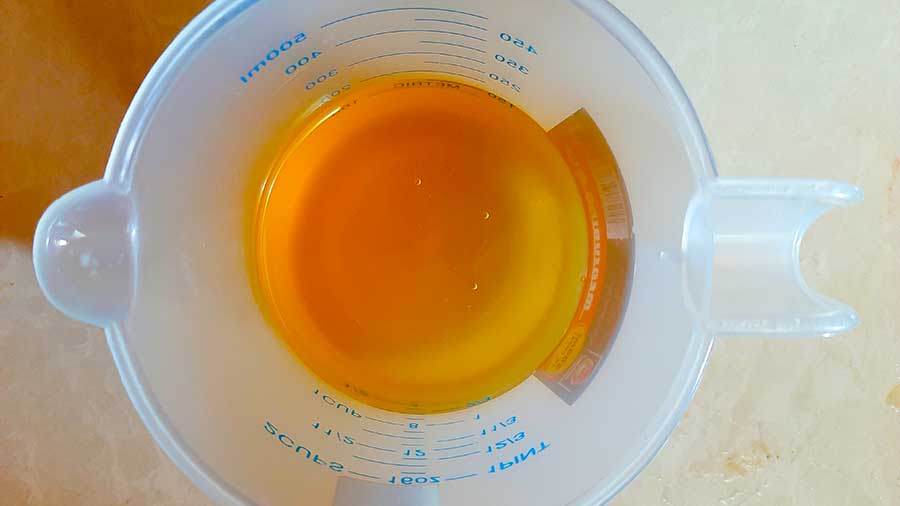Part of taking care of plants is making sure that they receive the proper macro and micronutrients. The other part is making sure they don’t get eaten by bugs.
Starting a garden is one of the best things decisions that I made. It has become my sacred place whenever I get stressed out at work. It also gave me a venue where I can exercise my mind and body. Every morning, I try to check on my plants so I do a little walking. And sometimes, when I check, I observe something new. Why are the leaves turning yellow? Why are there ants all around? Why are the leaves curling up?
Every time I encounter problems like these, I immediately do research and try out different things. This problem-solving activity really sharpens my mind. And the joy it brings when I finally solve a problem is really satisfying. I’m sure you also feel the same when your plants go back to being healthy after a bout with nutrient deficiency, bugs, pests, and other things that try to harm them.
A few days ago, I went to take a picture of my dwarf sunflower as it was about to bloom for the first time. The picture turned out great, but there was something that kind of ruined the entire picture. Looking at the leaves, I noticed the irregular holes in the leaves which can only be made by insects. I’m not sure what ate it but I know it has to stop before it affects my entire garden.
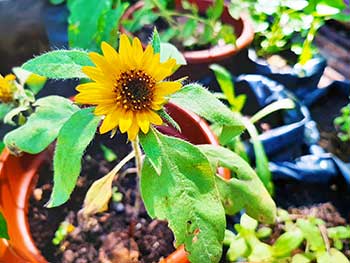
Since the time that I started gardening, I have tried and tested some homemade solutions to get rid of pests and insects. To be exact, I made four types of organic pesticide already and I would like to share the results with you.
These are the homemade pesticides I have made so far:
- Oil and Soap Spray
- Chili Garlic Spray
- Oriental Herbal Nutrients
- Garlic Spray
From the 4 organic pesticides I made, the one that proved to be most successful is the oil and soap spray. The oil and soap pesticide is easy to make at home with ingredients commonly found in the kitchen. It only takes 5 minutes or less to prepare and it can be applied immediately. When sprayed in the late afternoon, the effect is seen the following morning. The oil and soap spray can eliminate soft-bodied insects such as aphids and mealybugs.
For me, in terms of speed of preparation, effectiveness, and degree of potency, I would say that the best homemade pesticide that I have made so far would be the oil and soap spray.
The Effect of Oil and Soap Spray
Before I made the oil and soap spray, I have made the other three on my list at some other time. The first pesticide I made was the chili garlic spray, followed by garlic spray, and then oriental herbal nutrients (OHN 1). I was just trying stuff around that I see on the Internet and test it if it works. To be honest, I was kind of sad why I made the oil and soap spray last because it turned out to be the most effective of them all.
So there, the search for the best homemade pesticide is over, at least in my case. However, you don’t have to take my word for it. I applied it to my pepper, tomato, sunflower, and basil plants. I also applied it to a mild mealybug infestation in my roses.
The way it works is that the oil and soap mixture covers the bodies of insects. However, it is important to note that this pesticide only works for soft-bodied insects such as aphids and mealybugs. At least this worked for me. The oil and soap mixture washes out the wax covering of the insects which exposes their soft tissues. When this happens, the insects experience dehydration causing their deaths. I would say that this process happens in no more than 14 hours. This was when I sprayed at around 5 in the afternoon, and when I checked the following morning at around 7, there were no more signs of aphids and mealybugs.
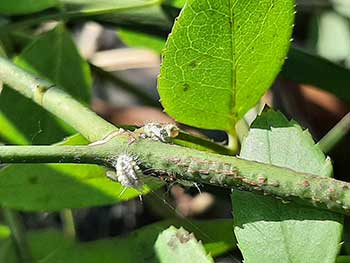
The Dangers of Using Oil and Garlic Pesticide
Although I was thoroughly impressed with the effect of this pesticide, there is something to worry about. I was not able to see it at first since the spraying process is as normal as it can be. What I observed the following morning is something I haven’t seen before. The sprayed leaves were a bit shiny and they were a little too smooth to the touch. Actually, in some plants, especially the pepper, the leaves were really shiny and it was not normal. I believe this is because of the oil in the pesticide.
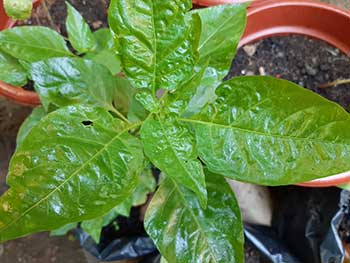
The oil coated the leaves and obviously, they were stuck there. Now, when the leaves are covered in oil, they are in danger of oil burn, just like when you apply oil to your skin and take a sunbathe. The intense and direct heat from the sun could potentially damage the soft tissues of the leaves. Furthermore, the oil also covers the stomata or the small pores in the leaves that are responsible for the plants’ respiration. You can say that they might suffocate and wither.
Knowing the dangers, I immediately sprayed the leaves with water. Lots and lots of water! This helped removed the oil in the leaves although, for the pepper plants, it wasn’t totally removed. But at least, they were not as shiny as before. Luckily, this happened before the sun directly hit my plants. When the sun did hit them, nothing really bad happened, although, for the pepper plants, their leaves look slightly wilted. However, by late afternoon, the leaves were back to normal again.
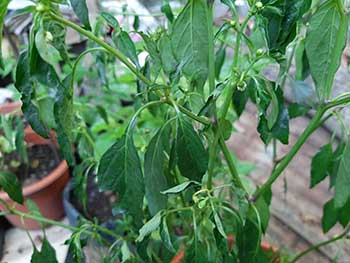
It’s been a week after I applied the spray and not one aphid nor mealybug was in sight. Should they come back again, I already have my oil and soap spray in hand. In fact, it’s just sitting under my kitchen sink.
How to Make the Oil and Soap Spray
It’s really easy to make and I wished I would have done this sooner. All you need are the following:
- 1 cup of vegetable oil. If you don’t have vegetable oil, you may use ordinary cooking oil.
- 1 tablespoon of dishwashing soap
- Glass or plastic container, enough to contain the mixture
The procedure is pretty straightforward. Pour the vegetable oil into the container. In my case, I’m using an old plastic bottle. Add the dishwashing soap. Close the lid and give it a rough shake. A 10-second shake will be enough.
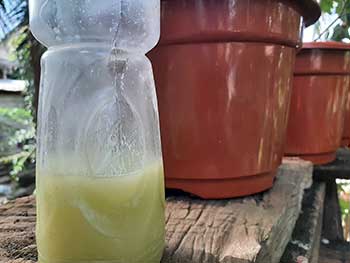
To use this mixture, make sure to dilute it first with water. The dilution rate is 10 ml/liter of water. Or simply, around 1 tablespoon per liter of water. Give it a gentle shake again before spraying directly unto the affected areas.
The Effects of Chili Garlic, Garlic, and Oriental Herbal Nutrient Spray
I mentioned a while ago that the oil and garlic spray was not the first pesticide I made at home. The first one I made was the chili garlic spray. Obviously, you need chili (ex. Cayenne pepper) and garlic for this to work. Basically, you chop the chili and garlic into small pieces and let them soak in water. For a complete guide on how to make this and the description of its effects, click here.
It took about 4 applications, which was about 2 weeks for the aphids to go away. You need to be patient if you want to use this spray. The reason why you may prefer this one over the oil and soap is that it is completely organic. All the pesticide properties are coming naturally from chili and garlic. I would say this is my second best homemade pesticide.
For the garlic spray, it so happened that I ran out of chili. So I was curious if garlic was enough to scare away those pesky insects. I’ve read somewhere that most insects don’t like the smell of garlic. So I just chopped up some garlic and soak the tiny pieces overnight. After two weeks of application, I could see that there were still some mealybugs on my roses, but not that many. I would say, it is partially successful.
Lastly, the Oriental Herbal Nutrient or OHN 1. There is an OHN 2, but I lacked the necessary ingredients for it. This was the most tedious to make, but according to the research I did, it should repel most insects, including aphids, thrips, leaf miners, mealybugs, and other common harmful garden insects. It is made by fermenting small slices of ginger and garlic in molasses or brown sugar.
Then after five days, pour in a certain amount of vinegar depending on the total weight of the ginger, garlic, and molasses. After pouring in the vinegar, you have to wait for another ten days before it can be used.
So after 15 days, I collected my OHN 1 pesticide and immediately applied it to my plants. I was hoping for a successful result but to my dismay, the aphids were still there by the next morning. In the first week, there was a minimal effect. In summary, it worked just like my garlic spray. The aphids and mealybugs were not completely eradicated, even after a month.
Maybe I missed something, or I made some mistake, but I would say the garlic spray and OHN 1 are tied at the 3rd spot.
Stop Spreading the Aphids
Always have some form of pesticide on hand. Insects such as aphids are very tiny and they may not be easy to detect. Some types even have translucent bodies so they appear camouflaged within your plants. They can slowly kill your plants by sucking the sap and soft tissues of your plants because this is their food. A warning sign of aphids is deformed leaves, so always inspect your plants every day.
The presence of ants on the leaves also tells you that something may be lurking on the leaves. Once detected, apply your preferred pesticide immediately before the harmful insects spread throughout your garden. For me, I have my oil and soap spray always ready.


